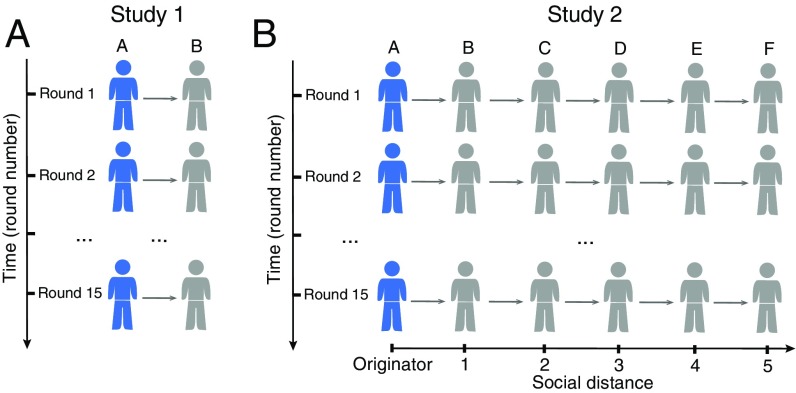Fig. 2.
Schematic representations of the two experimental setups. (A) In study 1, two individuals, A and B, were paired for 15 consecutive rounds. In each round, they separately faced the visual perception task described in Fig. 1. The correct answer was always identical for both of them, but the difficulty level could differ between them. The respective difficulty levels were fixed across the 15 rounds. In each round, individual B could reconsider her or his initial estimate after observing A’s estimate. (B) In study 2, six participants (here called individuals A, B, C, D, E, and F) were connected along a chain for 15 consecutive rounds. Each individual in the chain was paired with his or her predecessor in the chain. Otherwise, the same procedure was followed as in study 1. That is, in each round, the estimate of the originator, individual A (in blue), was shown to individual B, who could then reconsider her or his initial estimate accordingly. Individual B’s revised estimate was then shown to C, who could, in turn, reconsider her or his estimate, and so on until individual F. This process of social transmission from A to F was repeated across the 15 rounds. The originator A always experienced a low difficulty level of 1, and all subsequent participants always experienced a high difficulty level of 3.

